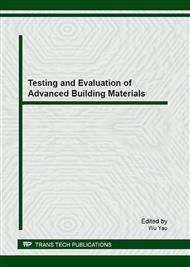p.220
p.225
p.230
p.235
p.239
p.244
p.249
p.255
p.259
Study on the Influence Factors of the Dispersion of Carbon Nanotubes in Aqueous Solution
Abstract:
In this paper, the optimal ratio of surfactant and carbon nanotubes (CNTs), the best ultrasonic time and the effects of three different surfactants were studied based on which the CNTs dispersion method was recommended. For each surfactant, optimal mix ratio of surfactant and CNTs could be found. The results of UV-Vis spectrophotometer test and centrifugation showed that the best CNTs dispersion could be obtained with OP, and the optimal mass ratio between OP and CNTs was about 0.7, and when the concentration of CNTs was 1g/L, the optimal ultrasonic time was about 1 hour. With the concentration of CNTs increased, the optimal ultrasonic time also increased.
Info:
Periodical:
Pages:
239-243
Citation:
Online since:
January 2013
Authors:
Keywords:
Price:
Сopyright:
© 2013 Trans Tech Publications Ltd. All Rights Reserved
Share:
Citation:


